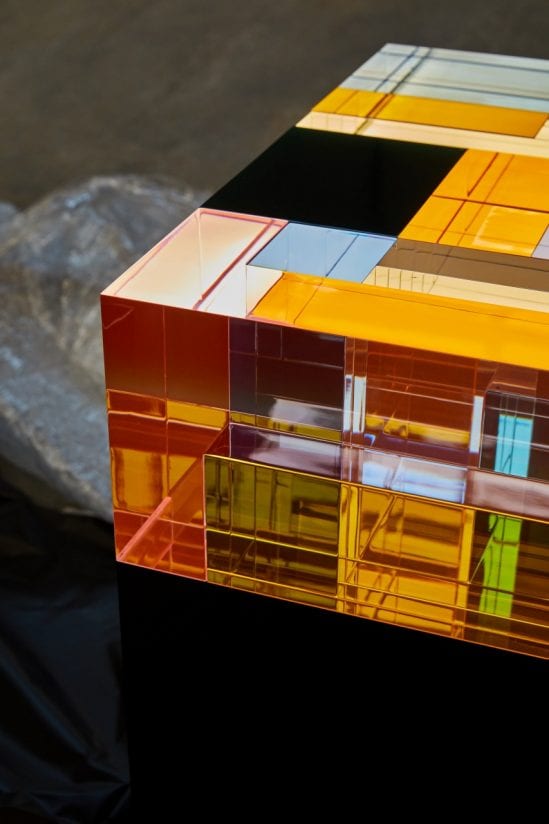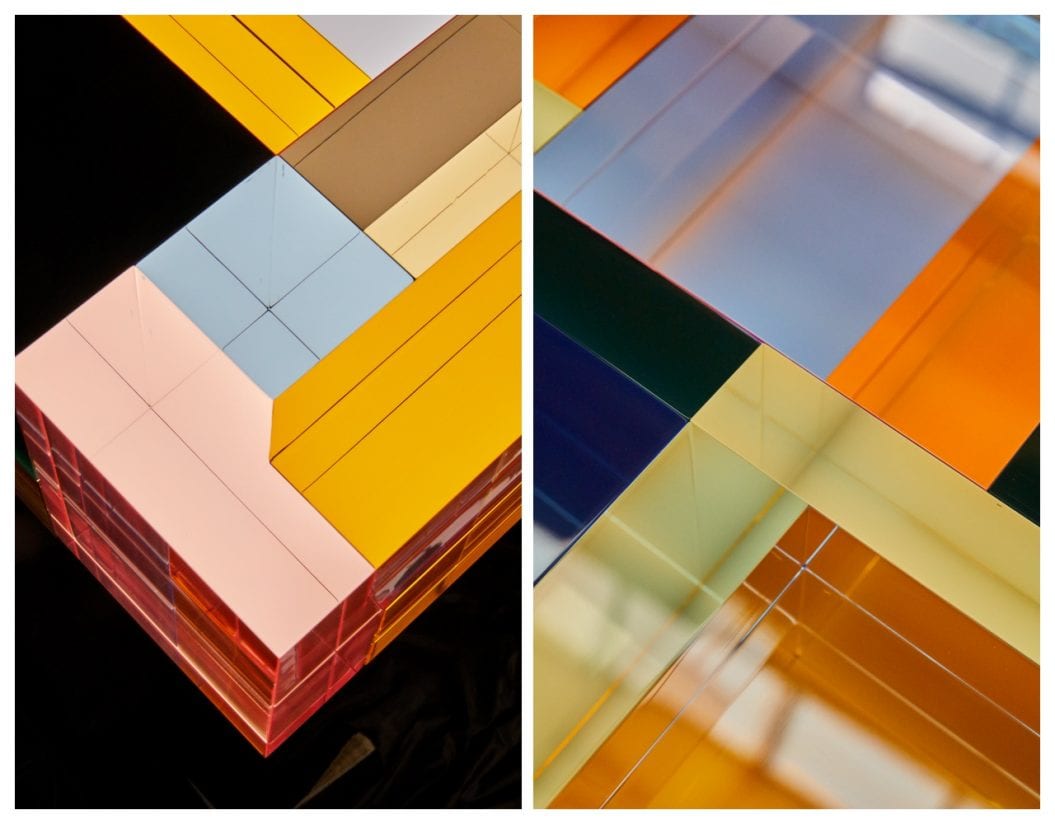The Great Design Disaster
The Great Design Disaster is a project born from the creative clash of interior designer and gallerist Gregory Gatserelia with art and design expert Joy Herro, who invents a new way of conceiving a collectible design by making the collector or the buyer, the creator.
The Great Design Disaster begins with a simple yet powerful consideration or a reality that will soon envelop us: that the market is full, waste and pollution have reached emergency proportions, and the experience of shopping for design objects has become nothing but a voyeuristic act where designers and artisans show their creations and clients passively pick and collect. With this Great Design Disaster, the two designers, Gregory Gatserelia and Joy Herro utilise the brains of the consumer, takes his or her needs, and work with designers or craftsmen to create the perfect object. The consumer now becomes the creator along with the designer. This process also puts the collector in touch with the craftsmen to understand the entire process involved, thus elevating the process as well as respecting each proponent of the process.
“What we intend to create through the Great Design Disaster, is an understanding of the entire process of designing from the concept to the sourcing of the craftsmen. The entire process of communication with craftsmen, comprehending their difficulties in translating the design due to technical difficulties, the material play and then finally giving birth to a product becomes open and thus respected for all the various steps involved in its creation,” says Joy Herro, a designer who is passionate about art and design, and is deeply interested in historical Italian design. She managed a mid-century design gallery, a role that let her forge numerous connections with talented artisans and gave her deep insights in all things related to tailor-made products as well as all-things business-related, skills that soon became the roots of The Great Design Disaster approach.
This process that Joy describes seems very much similar to “Made to Order” or “Bespoke” furniture design. But Joy says that the added beauty in this new process is the respect for the three-pronged process of design: creative ideas, workmanship, and meeting all the clients’ needs. The ultimate purpose of The Great Design Disaster is to break free from the traditional boundaries of the contemporary design market that too often is not able to offer much more than standardised trends and large-scale productions. While the Great Design Disaster provides a luxurious yet essential experience of design.

Gregory Gatserelia and Joy Herro invent a new way of conceiving the experience of collectible design.
Each product of the Great Design Disaster is personal, like the glass table, shown above which is a piece of bespoke furniture, made for a collector who wanted the legs of the high table to be elegant with a biometric design that is also an attention grabber as one enters the house.
“The process is almost sacred as it is an educational process of understanding the need and using the best of skills which here was to mimic the works of master sculptor Diego Giacometti, a Swiss designer, and sculptor, through another craftsman and thereby respecting each process of this design in its entirety,” explains Joy.
The name of the firm became an anecdote that the two design enthusiasts share of the many catastrophes that arise in the process of creating when the clients/customers brief are not taken into consideration. And the Great Design Disaster is an intended pun at the design community for creating objects that resist the needs of the customer. The Great Disaster is also akin to the coming together of the two contrasting couple who only agreed on one thing and that was that the art and design world had become contaminated by superfluous factors, art had surpassed design by far commercially and, very often, sub-par works of art were outclassing masterful design pieces that required far more know-how and process-mindedness to create. The collectors were being taken for a ride, the two designers opinioned, and their answer was to turn the collector into a creator. And that’s when a mere disaster became a vocation. It became their mission.
 The Great Design Disaster aims to introduce a new market concept based on creation rather than on shopping. A utopian structure of creativity feeding the market rather than marketing demands or traditional structure of demand versus supply. This new structure makes sure that the marketplace is never crowded with designs that make it easy to sell, easy to make, and easy to produce in large qualities. A market that ends the traditional structure of demand and supply and is developed upon ideas, where the matching of sellers and buyers is replaced by one of the people with desires of creativity and people with crafting talents who can translate those desires into objects. The Great Design Disaster challenges individuals with one question: why things we own should be less significant than ourselves, after all? They should just be an expression of who we are.
The Great Design Disaster aims to introduce a new market concept based on creation rather than on shopping. A utopian structure of creativity feeding the market rather than marketing demands or traditional structure of demand versus supply. This new structure makes sure that the marketplace is never crowded with designs that make it easy to sell, easy to make, and easy to produce in large qualities. A market that ends the traditional structure of demand and supply and is developed upon ideas, where the matching of sellers and buyers is replaced by one of the people with desires of creativity and people with crafting talents who can translate those desires into objects. The Great Design Disaster challenges individuals with one question: why things we own should be less significant than ourselves, after all? They should just be an expression of who we are.

 “For The Great Design Disaster to happen, three figures are needed. At first, there is the collector, who has a chance to step out of his role of commercial target and into the role of creative conceiver. The collector is an art and design lover, whose mind has been seasoned by culture and beauty, a deep appreciation of the mastery of craftsmanship, and is ready to take a step further and get involved in the process of creation. His idea sets the whole process in motion when he meets The Great Design Disaster’s Agents of Creation,” explains Gregory Gatserelia. Gatserelia runs the internationally acclaimed Gatserelia Design firm and is recognised by Architectural Digest as one of the top 100 interior designers in the world.
“For The Great Design Disaster to happen, three figures are needed. At first, there is the collector, who has a chance to step out of his role of commercial target and into the role of creative conceiver. The collector is an art and design lover, whose mind has been seasoned by culture and beauty, a deep appreciation of the mastery of craftsmanship, and is ready to take a step further and get involved in the process of creation. His idea sets the whole process in motion when he meets The Great Design Disaster’s Agents of Creation,” explains Gregory Gatserelia. Gatserelia runs the internationally acclaimed Gatserelia Design firm and is recognised by Architectural Digest as one of the top 100 interior designers in the world.
Joy Herro and her team reach into the collector’s brain and help him articulate his thoughts, then identify a match with his fellow creative spirit, the artisan. The Agents of Creation deal with all parts of the process, from quoting the project to introducing the idea to the selected artisan, making sure that the vision is well respected and materially represented. Here the last figure comes into play: the artisan builds the dream, shapes the idea with his own hands into a one-of-a-kind object. With a certificate of authenticity, the piece of Disaster comes with its own instruction and maintenance manual, unique and irreplaceable.
“The product created from this process has an individual soul, the result of the visions and actions of all three players into one piece. It does not matter if the idea is bizarre, if it seems too out of the ordinary, or even if it is too disastrous to become reality. The Great Design Disaster is to break free from the traditional boundaries of the contemporary design market that too often is not able to offer much more than standardised trends and large-scale productions, and to provide a luxurious yet essential experience of design-led by nothing but creativity and based upon pure experimentation,” says Gatserelia.
All Images Courtesy: The Great Design Disaster











